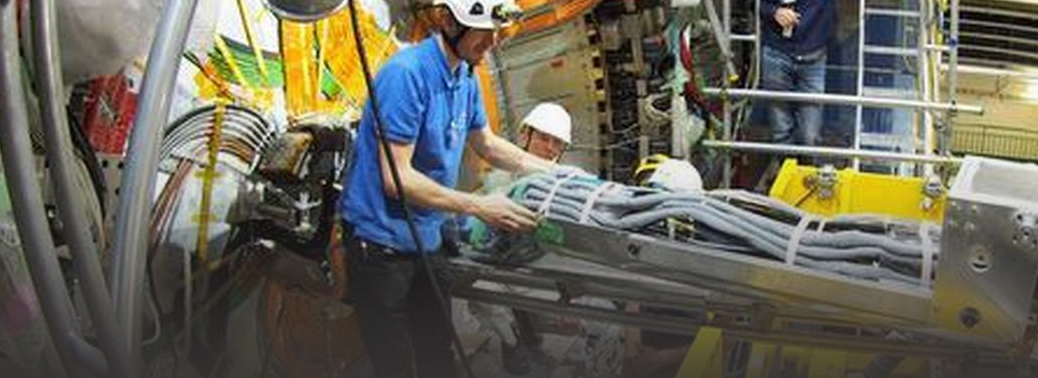Belle II: Chasing cousinly rivalry at the subatomic level
10, Mar 2019

Belle II, a particle accelerator experiment located in Tsukuba, Japan, is a unique facility in the world. Here, electrons and positrons (anti-electrons) collide to produce B mesons in order to study the breakdown of symmetry in these decays. As an international collaboration involving 26 countries, Belle II has an Indian link — a team led by physicists and engineers from the Tata Institute of Fundamental Research, Mumbai, have built the fourth layer of the vertex detector.
The focus at Belle II is on B-mesons — particles that contain the B-quark, also known as the beauty or bottom quark. Says Tom Browder from the University of Hawaii who is also the spokesperson for Belle II, In particular, we focus on the differences between the decay of the B-mesons and that of their antiparticles, the anti B-mesons. We are looking for the breakdown in the symmetry between matter and antimatter.
This broken symmetry between matter and antimatter is one of the most fundamental questions in particle physics.
Asymmetric universe
- At the time of the Big Bang some 13.7 billion years ago, the universe was in a fully symmetric state with equal quantities of matter and antimatter. Yet, today, we are in this extremely antisymmetric state. As soon as the first differences were discovered in particle physics between kaons and antikaons in 1964 at Brookhaven, Sakharov realised this was an important clue to understanding this asymmetry between matter and antimatter.” Sakharov suggested that we start with this symmetric state of the universe at the beginning, then decays of elementary particles that were asymmetric between particles and antiparticles amplified this difference. That led to the matter-dominated universe.
- The original CP violation, or asymmetry between matter and antimatter, which was discovered in 1964, was found in Kaons — particles containing the strange quark. The effects there were tiny — about one part in a thousand.
- For the particles containing the B quark, the effects of this matter-antimatter symmetry are large; they are of order 100%. The B quarks have much greater asymmetry. They are theoretically much easier to understand they are cleaner. That’s also the motivation for these machines.
- In addition to other experiments at CERN, the European Organisation for Nuclear Research, there’s one experiment that is devoted to B quark physics — the LHCb or the Large Hadron Collider beauty experiment. In this, two proton beams are collided at high energies and the results are observed.
- The facility in Japan uses electron-positron collisions. These are much cleaner, as the electron and positron are point-like particles. So, we will be in a competition with the LHCb as time proceeds.” He adds laughingly, At the LHCb, they throw two Swiss watches at each other and [a] lot of stuff comes out, while we have clean collisions of point-like particles.”
Anomalous interactions
In the Standard Model – the core theory of particle physics – there are generations of low mass particles (leptons); electrons, the muon and the relatively heavy cousin of the electron, the tau are the leptons. These particles are expected to have identical interaction strengths, the so-called couplings, in the Standard Model of weak interactions in physics. However, in particle decays where only leptons are produced (leptonic decays), it appears that the tau and muon particles have identical couplings. Specifically, interactions where a kaon particle decays to muon and a kaon decays to electron seem to have the same coupling to 1%. But B decays to tau leptons when compared to B decays to muon or electron are not on equal footing.






